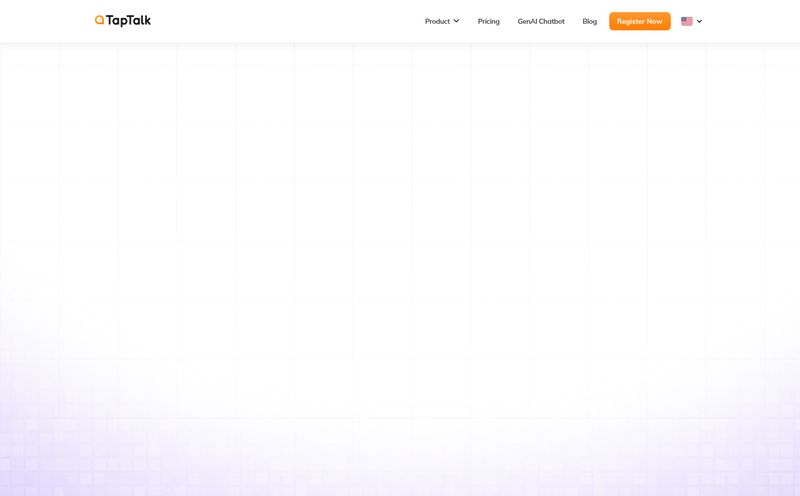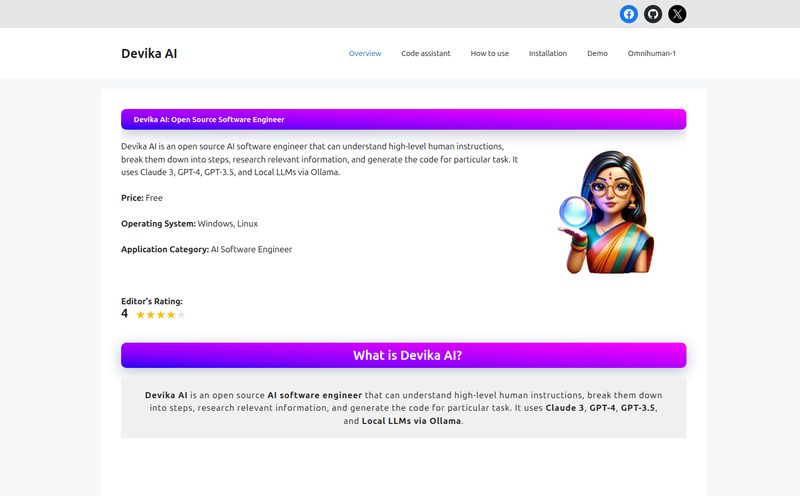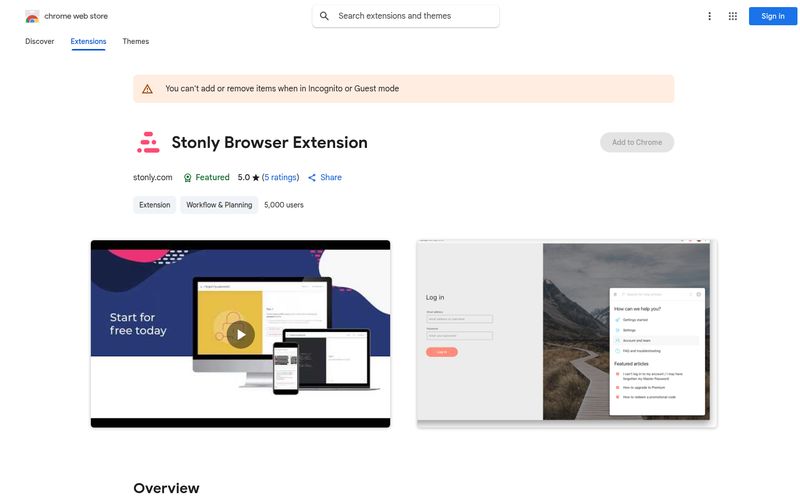I’ve been tinkering with Android phones since the days of Cupcake and Donut. Yeah, a while. And for almost that entire time, one of the first things I’ve always done is ditch the stock launcher. From the glory days of ADW.Launcher to the long-reigning king, Nova Launcher, customizing my homescreen has always been part of the fun. It’s your phone’s digital living room, right? You want the furniture arranged just so.
Lately, though, the word on everyone's lips is 'AI'. It's in our search engines, our document editors, our photo apps... it was only a matter of time before it came for our homescreens. So when I heard about Twine Launcher, I was intrigued. The promise? To integrate an AI assistant, powered by ChatGPT, directly into your phone's main interface. It’s meant to tie everything together—apps, notes, people, tasks. Sounds pretty ambitious.
But here’s the thing. When I went to find their official site… poof. Gone. A “page not found” error. This isn’t just a review anymore; it's become a bit of a tech investigation. What was Twine, and is it still a thing?
What Exactly is Twine Launcher Supposed to Do?
Okay, let's push past the ghost of its website for a second and talk about the concept, because the concept is really interesting. Twine wasn't just another grid of icons. The whole idea was to transform your static homescreen into a dynamic, intelligent assistant.
Think about it. Your phone knows who you talk to, what apps you use, and when you use them. Why is the homescreen still so... dumb? Twine aimed to change that. Its core mission was to be the connective tissue—the twine, I guess—between all the scattered bits of your digital life.

Visit Twine AI Launcher
It was built on a few key ideas:
- A ChatGPT-Powered Assistant: This is the main event. Instead of having to open a separate app, you'd have the power of a large language model right on your homescreen, ready to answer questions, draft emails, or just brainstorm ideas.
- Usage-Based App Organization: Most of us spend way too much time organizing apps into folders we barely open. I know I do. Twine promised to watch how you use your phone and automatically arrange your apps for you, surfacing what you need, when you need it. A bit like the Siri App Suggestions widget on iOS, but for your whole launcher.
- Integrated Notes and Tasks: This is a big one for me. The friction of having a thought and then having to unlock your phone, find your notes app, open it, and create a new note is just enough to make you forget the brilliant idea you just had. Twine put note-taking and task creation right on the front page.
It’s a powerful pitch. A homescreen that actively helps you, rather than just being a passive menu.
My Honest Take on The Good and The Not-So-Good
Every piece of software is a series of trade-offs. Based on what we know, Twine is no different. It had some genuinely brilliant sparks of an idea, but also some things that would make any seasoned Android user raise an eyebrow.
Where Twine Could Genuinely Shine
The feature that really caught my eye was its ability to remember information about people. The pitch was that you could tell it, “Remember my colleague Alex's son is graduating next month,” and it would just… remember. That’s like having a mini-CRM for your personal life built right into your phone. For someone who is terrible with names and details (ahem, me), that’s not just a feature; it's a superpower.
And let's be real, the convenience of having an AI assistant one tap away, without opening another app, is a genuine quality-of-life improvement. Reducing the number of taps to get something done is the holy grail of UI design, and Twine was swinging for the fences on that one.
Some Potential Sticking Points
On the flip side, building your entire experience around ChatGPT has its own issues. As anyone in the SEO or tech world knows, GPT can be a bit… weird sometimes. It hallucinates facts, it can be oddly formal, and its performance depends entirely on the quality of OpenAI's servers that day. Hitching your launcher's wagon to that star is a bold move. What happens when the API is down? Does your homescreen just stop working?
Then there's the customization aspect. Power users, the kind of people who actively seek out new launchers, love to tinker. They want to change every icon, tweak every animation, and control every pixel. Twine, by its nature, seemed to be more of a “let us handle it for you” kind of deal. For many, that’s not a feature, it's a restriction. You're trading deep personalization for baked-in intelligence.
The Elephant in the Room: Where Did Twine Go?
So, back to that “page not found” error. What gives? Honestly, in the world of tech startups, this is more common than you'd think. It's a tough world out there. A brilliant idea doesn't always translate into a sustainable business.
My guess? It could be one of a few things. Maybe they ran out of funding—paying for API calls to OpenAI for every user can get expensive, fast. Maybe the team was acqui-hired by a bigger company that wanted their talent for a different project. Or maybe they simply realized the technical hurdles were too high and decided to pivot to something else. It happens. It reminds me a bit of all the cool, experimental apps from the late 2000s that just vanished. A moment of innovation that flickered out.
This is the often-unseen side of the tech world. For every massive success story, there are a thousand fascinating projects like Twine that shine brightly for a moment and then disappear. It’s not necessarily a failure; it's just part of the process.
So, Is It Worth Trying to Find and Install?
This is a tough one. If you're an average user just looking for a stable, reliable way to use your phone, I’d say probably not. Hunting down an old APK file for a potentially unsupported app is a recipe for bugs and security headaches.
But… if you’re a fellow tinkerer? A digital archeologist who loves playing with unique concepts? Then yeah, it could be a fun project. Think of it less as finding your next daily driver and more as experimenting with a glimpse of a possible future for phone interfaces.
If the idea of an intelligent, simplified homescreen appeals to you but you want something that's, you know, still available, you might check out alternatives like Niagara Launcher, which focuses on minimalism and ergonomics, or just lean into using AI-powered widgets on a stable base like Nova Launcher.
Frequently Asked Questions about AI Launchers
What is an Android launcher?
An Android launcher, or homescreen replacement, is an app that lets you customize the main user interface of your Android device. It controls your homescreen, your app drawer, and how you launch applications. It’s one of the best things about Android, allowing for deep personalization that you can’t get elsewhere.
How does an AI launcher like Twine differ from a regular one?
A regular launcher like Nova or Action Launcher focuses on customization—giving you the tools to change icons, layouts, gestures, and colors. An AI launcher's primary goal is to use artificial intelligence to automate and predict your needs, organizing apps for you, integrating assistant features, and trying to make the interface more proactive.
Is it safe to use third-party launchers?
Generally, yes, as long as you stick to reputable launchers from the Google Play Store with good reviews and a long history. They require broad permissions to function, so it's smart to be cautious with new or unknown launchers. Since Twine isn't readily available, installing it from an unofficial source carries more risk.
Does using an AI launcher drain your battery faster?
It can. An AI launcher that is constantly processing data in the background or making frequent calls to a cloud-based AI (like ChatGPT) will likely use more battery than a simple, static launcher. The impact varies depending on how efficiently the app is coded.
What happens to my apps if I uninstall a launcher?
Nothing at all! Your apps and data are perfectly safe. Your phone will simply revert to the stock launcher that came pre-installed. All your apps will still be there, just arranged differently in the default app drawer.
Are there other good AI-powered launchers available?
The space is still very new. While many launchers are incorporating small AI features (like smart suggestions), fully integrated AI launchers like Twine are still rare. The trend is moving more towards AI features within existing, popular launchers rather than entirely new AI-centric ones.
A Fascinating Idea, Even If It's Lost in Time
At the end of the day, Twine Launcher feels like a fantastic concept that might have been just a little ahead of its time, or perhaps just a victim of the brutal startup ecosystem. The idea of an AI-woven homescreen that anticipates your needs and breaks down the barriers between your apps is compelling as heck.
Even if Twine itself is now just a ghost in the machine, the ideas it championed are not going away. I have no doubt that we'll see more and more intelligence baked into our phone's most basic interfaces. The static grid of icons has had a good run, but its days are numbered. The future is predictive, it's integrated, and it’s a whole lot smarter. Twine was just an early, fascinating peek at what that might look like.
Reference and Sources
- For a look at a popular minimalist launcher: Niagara Launcher Official Site
- For the long-standing king of customizable launchers: Nova Launcher on Google Play
- For insights into the startup lifecycle: "The vast majority of startups fail, and that's OK" - TechCrunch



